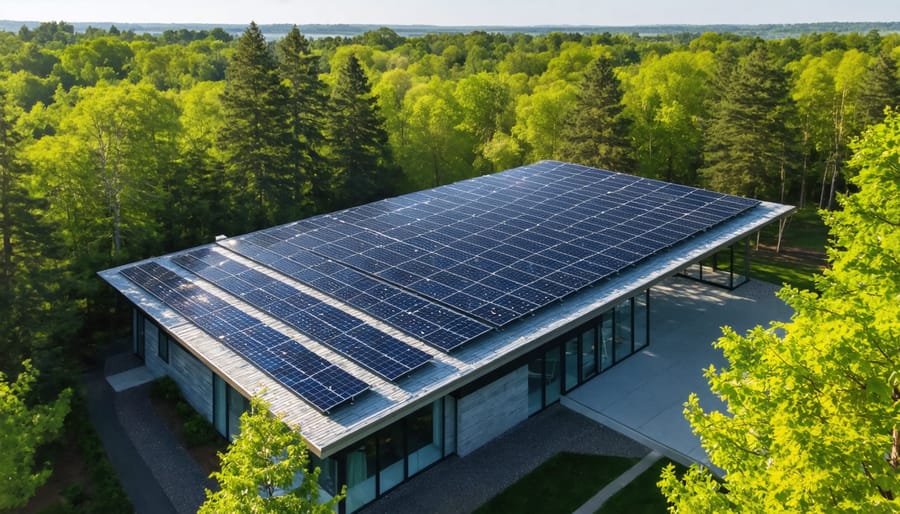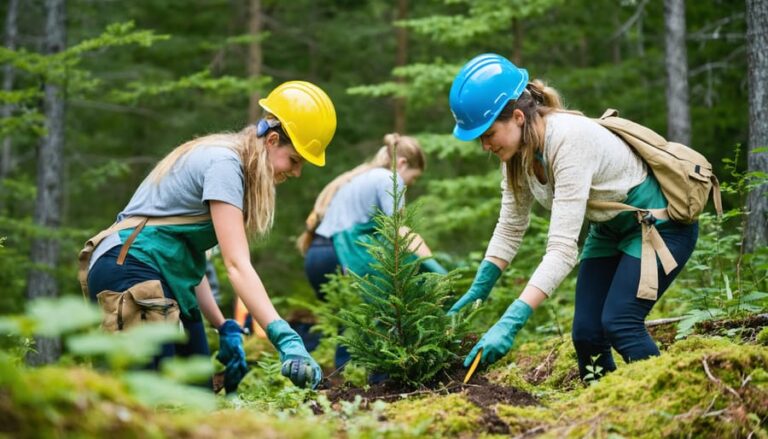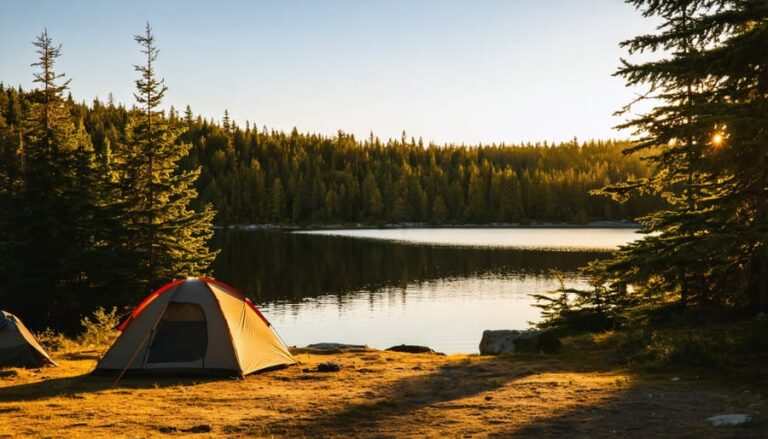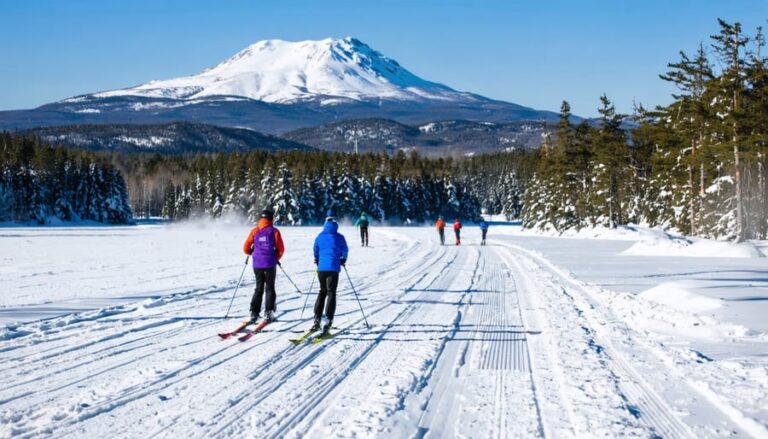Transform your next outdoor adventure with Ontario’s groundbreaking sustainable parks, where wilderness meets environmental innovation. These thoughtfully designed green spaces are revolutionizing how we experience nature, offering eco-friendly stays in Ontario parks that minimize environmental impact while maximizing visitor enjoyment. From solar-powered comfort stations to zero-waste facilities, these parks showcase cutting-edge conservation practices while providing unforgettable outdoor experiences.
Imagine waking up in a carbon-neutral cabin, surrounded by protected forests and pristine lakes, knowing your stay actively contributes to environmental preservation. These sustainable sanctuaries combine traditional camping charm with modern eco-technology, featuring rainwater harvesting systems, energy-efficient lighting, and locally sourced building materials. Whether you’re an experienced outdoor enthusiast or a first-time camper, Ontario’s sustainable parks offer a unique opportunity to connect with nature while being part of the solution to environmental challenges.
As climate change concerns grow, these innovative green spaces demonstrate how tourism and environmental stewardship can work in harmony, setting new standards for sustainable outdoor recreation across North America.
Smart Design Meets Natural Beauty
Energy-Efficient Facilities
Ontario’s sustainable parks are leading the way in energy-efficient facilities, proving that enjoying nature doesn’t have to come at nature’s expense. Solar panels gleam atop visitor centers and comfort stations, harnessing the sun’s power to provide clean energy for park operations. Many parks have installed smart metering systems that track and optimize energy usage throughout the day.
The switch to LED lighting across park facilities has made a remarkable difference, reducing energy consumption by up to 75% compared to traditional bulbs. These efficient lights illuminate trails, parking areas, and buildings while minimizing light pollution that could disturb local wildlife. Motion sensors ensure lights are only active when needed, especially in less frequently used areas.
Keep an eye out for innovative features like solar-powered charging stations for your devices and electric vehicle charging points at major park locations. Some parks even use solar-powered water heaters for shower facilities and ground-source heat pumps for building climate control.
Insider tip: Visit the interpretive centers to learn about each park’s specific energy conservation initiatives. Many parks offer interactive displays showing real-time energy production and consumption data – it’s fascinating to see how much power the sun provides on any given day!
Remember to do your part by turning off lights when leaving facilities and unplugging any personal devices once fully charged. Together, these small actions contribute to the bigger picture of sustainable park operations.

Water-Wise Solutions
Ontario’s sustainable parks are leading the way in water conservation with innovative solutions that protect our precious resources. Rainwater harvesting systems collect and store rainfall from rooftops and other surfaces, providing a sustainable water source for garden irrigation and non-potable uses throughout park facilities.
Many of our parks have implemented state-of-the-art water recycling systems that treat and reuse greywater from sinks and showers for toilet flushing and landscape maintenance. This smart approach significantly reduces the demand on municipal water supplies while maintaining the lush greenery that makes our parks so inviting.
Here’s an eco-friendly tip: Look for parks featuring low-flow fixtures in their washrooms and shower facilities. These modern installations use up to 30% less water than traditional fixtures while still providing excellent performance. Some parks even use sensor-activated faucets that prevent unnecessary water waste.
Natural filtration systems, like constructed wetlands and bioswales, help clean and manage stormwater runoff naturally. These beautiful features not only serve a practical purpose but also create additional habitat for local wildlife and add to the park’s natural aesthetics.
Visitors can do their part too! Bring a reusable water bottle to fill up at water stations throughout the parks. Some locations even feature bottle-filling counters that show how many single-use plastic bottles have been saved, making water conservation a fun and engaging experience for everyone.
Eco-Friendly Accommodation Options

Green Comfort Cabins
Experience the perfect blend of comfort and environmental consciousness in our Green Comfort Cabins, one of Ontario’s most innovative sustainable lodging options. These thoughtfully designed eco-cabins showcase the best in green building practices while offering all the comforts of home.
Built primarily from locally sourced timber and recycled materials, each cabin features solar panels that power energy-efficient appliances and LED lighting. The smart design incorporates natural ventilation and strategic window placement to maintain comfortable temperatures year-round, reducing the need for artificial heating and cooling.
Inside, you’ll find cozy spaces furnished with sustainable materials – from bamboo flooring to organic cotton bedding. The kitchenettes are equipped with energy-star rated appliances, and each cabin includes a water-efficient bathroom with a composting toilet system. Don’t worry about comfort though – these eco-friendly features enhance rather than compromise your stay!
Pro tip: Book your cabin during shoulder season (spring or fall) to experience the most pleasant natural temperatures and stunning seasonal views. Each cabin comes with a guidebook explaining its green features and how to make the most of them during your stay.
These cabins prove that luxury and sustainability can go hand in hand, offering a perfect base for exploring Ontario’s natural wonders while treading lightly on the environment.
Low-Impact Camping Areas
Ontario’s sustainable parks feature specially designated eco-camping zones that allow nature enthusiasts to minimize their environmental footprint while enjoying an authentic wilderness experience. These areas are carefully selected based on their ecological sensitivity and ability to withstand limited human impact.
Following low-impact camping guidelines, these zones typically offer simple amenities like raised tent platforms, composting toilets, and designated fire pits. What makes these areas special is their strategic placement away from sensitive wildlife habitats and rare plant species, while still providing campers with stunning views and immersive natural experiences.
Each eco-camping zone has specific carrying capacities to prevent overuse, and many operate on a rotation system to allow the environment time to recover between camping seasons. You’ll find clearly marked trails leading to these sites, helping to prevent unnecessary bush-whacking and soil erosion.
Pro tip: Book these sites well in advance, as they’re increasingly popular among environmentally conscious campers. Many locations offer educational programs about local ecosystems and wildlife, making them perfect for families wanting to combine outdoor adventure with environmental learning. Remember to pack eco-friendly camping supplies and always follow the “pack in, pack out” principle to help preserve these special areas for future generations.
Innovative Glamping Solutions
Experience the perfect blend of luxury and environmental consciousness with Ontario’s innovative glamping solutions. From solar-powered eco-pods nestled in the forest to off-grid yurts with composting toilets, sustainable glamping offers an unforgettable way to connect with nature while treading lightly on the earth.
One of my favorite discoveries is the treehouse glamping experience at Haliburton Forest, where elevated platforms use minimal ground impact construction and run entirely on renewable energy. These unique accommodations feature rainwater collection systems and energy-efficient heating, proving that comfort doesn’t have to compromise sustainability.
For those seeking something truly special, try the geodesic domes that dot the shores of Georgian Bay. These architectural marvels are equipped with solar panels, LED lighting, and locally sourced furnishings. What I love most about these domes is how their transparent sections offer spectacular stargazing opportunities while using special glass that prevents bird collisions.
Eco-friendly tipis and canvas tents are also gaining popularity, featuring hemp fabric construction and natural insulation materials. Many sites have implemented gray water systems that filter and reuse water for garden irrigation, while others utilize innovative biomass heating systems fueled by sustainable wood sources.
Pro tip: Book your sustainable glamping adventure during shoulder seasons (spring or fall) to minimize environmental impact and enjoy more solitude in these extraordinary accommodations.
Visitor Impact Management
Waste Reduction Programs
Ontario’s sustainable parks are leading the way in waste reduction through comprehensive programs that make it easy for visitors to minimize their environmental impact. From clearly marked recycling stations to innovative composting initiatives, these parks are committed to preserving our natural spaces for future generations.
Most parks now feature convenient three-stream waste stations, making it simple to separate recyclables, organics, and landfill items. You’ll find these stations at major gathering points, campsites, and trail entrances. Pro tip: Bring reusable containers and bags from home to reduce single-use packaging while enjoying your park visit.
The parks’ composting programs have been particularly successful, turning food scraps and organic matter into nutrient-rich soil for park gardens. Many locations even offer educational programs where visitors can learn about composting and sustainable waste management practices they can implement at home.
Several parks have embraced ambitious zero-waste initiatives, hosting special events that generate minimal waste and encouraging visitors to participate in “pack in, pack out” practices. Some locations have even removed garbage bins from certain areas, inspiring visitors to take responsibility for their waste and think more consciously about their consumption.
Don’t forget to check each park’s specific waste guidelines before your visit, as programs may vary by location. Many parks also offer guided educational tours focusing on sustainability practices, perfect for families and school groups looking to learn more about environmental stewardship.
Educational Programs
Ontario’s sustainable parks offer fascinating educational programs that bring nature and conservation to life for visitors of all ages. From guided nature walks to interactive workshops, these programs help create meaningful connections between people and the environment.
The popular “Park Naturalist” programs run throughout summer months, where experienced guides share insights about local ecosystems, wildlife habitats, and sustainable practices. Kids especially love the hands-on “Junior Ecologist” activities, where they can learn about native species through fun scavenger hunts and craft sessions using natural materials.
Many parks offer evening programs around campfires, combining storytelling with lessons about local Indigenous history and traditional ecological knowledge. These sessions help visitors understand the deep connection between cultural heritage and environmental stewardship.
For those interested in citizen science, seasonal workshops teach visitors how to identify plants, track wildlife, and contribute to ongoing conservation efforts. The “Leave No Trace” workshops are particularly popular, offering practical tips for minimizing environmental impact while enjoying the parks.
Insider Tip: Book educational programs in advance during peak season (July-August), as sessions often fill up quickly. Many parks also offer specialized group programs for schools and community organizations, perfect for organizing eco-themed field trips.
Several parks have recently introduced digital learning initiatives, including QR-code nature trails and interactive mobile apps that provide real-time information about local flora and fauna, making sustainable education more accessible and engaging for tech-savvy visitors.

Planning Your Eco-Smart Stay
Ready to plan your eco-conscious travel experience? Let’s make your stay in Ontario’s sustainable parks both memorable and environmentally responsible.
First, book well in advance, especially during peak seasons (May to October). Most provincial parks accept reservations up to five months ahead through the Ontario Parks website or call center. For private eco-lodges, booking windows vary but typically open 6-12 months in advance.
Pack smart to minimize your environmental impact. Bring reusable water bottles, eco-friendly toiletries, and biodegradable soap. Many sustainable accommodations provide filtered water stations and composting facilities, but it’s worth checking what’s available at your chosen location.
Consider shoulder season visits (April-May or September-October) when parks are less crowded and rates are often lower. Plus, you’ll get to experience Ontario’s spectacular spring wildflowers or fall colors while reducing the peak season strain on park resources.
For the most sustainable options, look for accommodations featuring:
– Solar or renewable energy systems
– Water conservation measures
– Local and organic food options
– Waste reduction programs
– Indigenous partnerships and programs
Don’t forget to check accessibility. While some eco-lodges are deliberately remote, others offer electric vehicle charging stations and wheelchair-accessible facilities. Most park websites provide detailed accessibility information and virtual tours.
Want to maximize your positive impact? Many parks offer volunteer programs and educational workshops during your stay. You might help with trail maintenance, wildlife monitoring, or native plant restoration – all while learning from expert naturalists.
Remember to read recent reviews and reach out directly to accommodation providers with specific questions about their sustainability practices. The most eco-friendly stays often have staff eager to share their green initiatives and help you make the most of your visit.
Choosing sustainable accommodations in Ontario’s parks isn’t just about finding a place to rest your head – it’s about being part of a larger movement to preserve our province’s natural wonders for future generations. By staying at eco-friendly facilities, you’re helping reduce energy consumption, minimize waste, and protect local wildlife habitats. These thoughtful choices create a ripple effect, encouraging more parks and facilities to adopt sustainable practices. Whether you’re camping under the stars, cozying up in a solar-powered cabin, or enjoying a stay in an eco-lodge, your decision supports local communities and helps maintain the pristine beauty of Ontario’s wilderness. As more visitors embrace sustainable options, we’re not just creating memorable adventures – we’re ensuring that the breathtaking landscapes, crystal-clear lakes, and diverse ecosystems that make Ontario special will continue to thrive for years to come.














+ There are no comments
Add yours